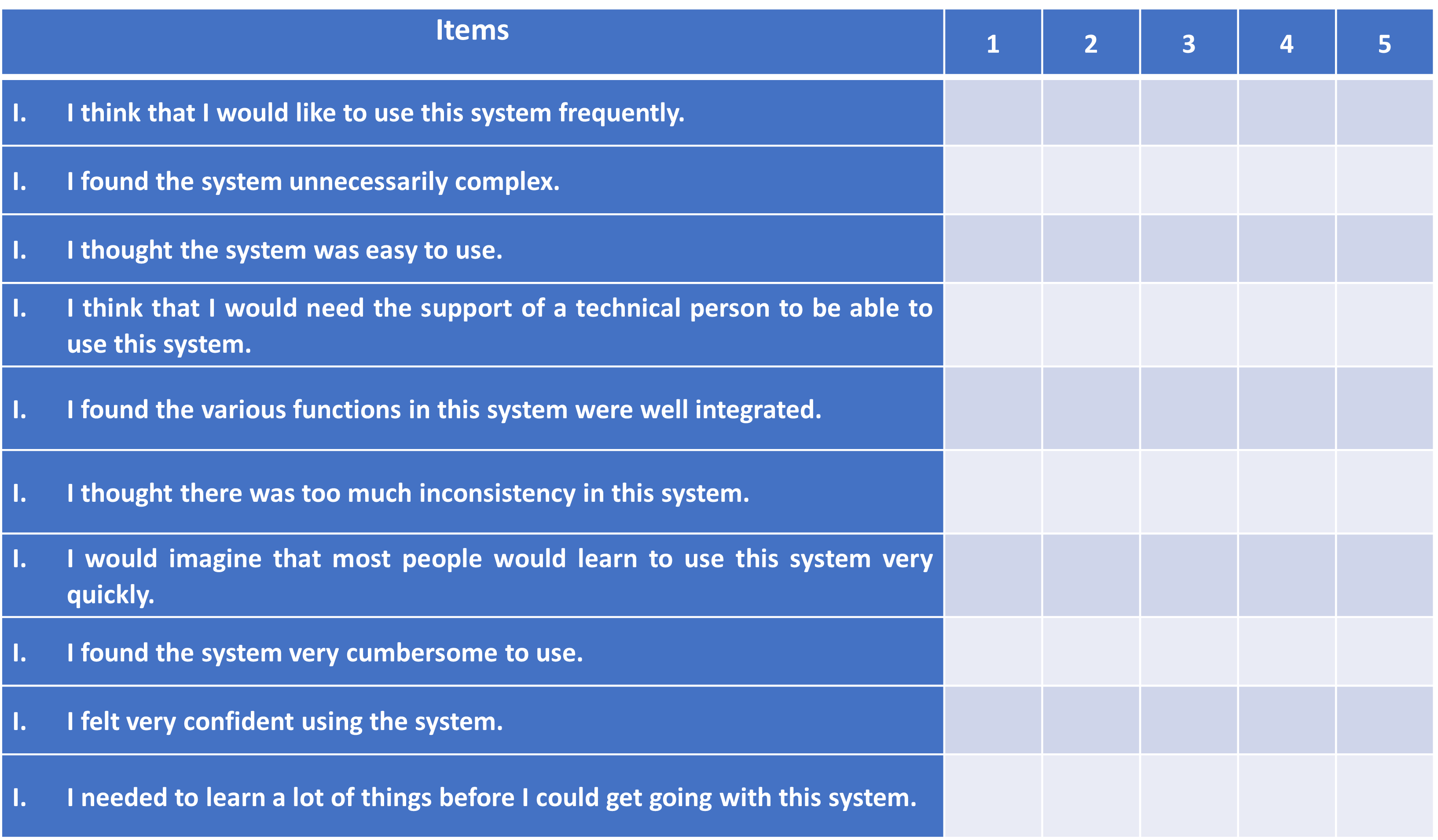28 The usability testing
What to do
Test the usability of the virtual gaming simulation (VGS) with their final users and address the recommendations and observations that might appear during the testing.
How to do it
Once a VGS is ready to be implemented, a testing period is needed to confirm its ease of use and clarity of the content. Remember that the most important aspect of the VGS is its educational effectiveness. Therefore, it is important to ensure that the final users are comfortable using the VGS, and that they understand how to proceed in order to achieve the learning objectives of the VGS.
To measure the usability of a simulation, the first step is to recruit a group of learners who are part of the VGS target audience. If possible, it would also be beneficial to have teachers and professionals in the field of knowledge participating in the usability testing.
After selecting a relevant sample, it’s important to choose an appropriate tool to assess the usability of the virtual simulation. One useful evaluation tool is the System Usability Scale (SUS), which is a questionnaire consisting of 10 items with five response options ranging from strongly agree to strongly disagree. This tool is designed to evaluate a wide range of technological devices, applications, and websites.
It’s important to note that qualitative data is also highly relevant. Therefore, adding a couple of open-ended questions to the end of the survey may provide context for the responses on the survey. It is also recommended that focus groups with users are included in the usability testing process. Focus group can provide a deeper understanding of the strengths, challenges and potential changes required to enhance the quality of the VGS.
Complementary resources
SUS questionaire:


